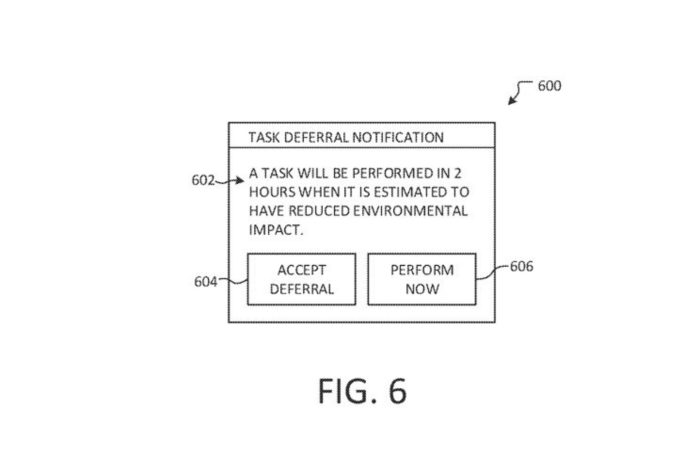Microsoft's latest patent describes a sustainable computing technology that can be integrated with Windows
The technology detects the sustainability of your energy provider and acts accordingly.
4 min. read
Updated on
Read our disclosure page to find out how can you help Windows Report sustain the editorial team Read more

Sustainable computing is a concept that has been gaining ground in the tech industry over the last few years. With movements such as the Right to Repair advocating for serviceable devices gaining traction, and our survey confirming people everywhere agree with legalizing and turning it into a law, it’s clear that many of us want devices that can last longer, and that can be repaired in case they go south.
However, a vital part of these devices’ longevity is their ability to manage resources in a way that doesn’t overstimulate them.
In other words, all of our devices cannot consume just the right amount of computing power necessary for different tasks, but they are equipped with software that regulates consumption, such as battery-saving settings. These are limited in their rights, and once enabled an array of other options won’t be available to use.
But Microsoft is working on a solution. The company, which already supports the Right to Repair movement and has designed its upcoming Surface devices to be highly serviceable, is working on a sustainable computing technology that can be theoretically integrated with Windows.
The patent calls the technology a Sustainability-aware computing device behavior management, and it’s a system that helps manage how a computer device behaves in a way that’s good for the environment.
The way it works makes it quite intriguing, as it can automatically detect just how sustainable your energy provider is: the platform gets information about how sustainable an energy grid is from a data provider.
Then it makes a forecast about sustainability, which a computer device can receive and store. The device uses this forecast to manage its functions.
It can do certain things at times that are less harmful to the environment, which means it uses less energy when the environmental impact is predicted to be high.
The device can update the stored forecast regularly or when it finds out that its location (and maybe the energy grid it’s connected to) has changed.
One of the most intriguing parts of this technology is its ability to cache the sustainability forecast, and it uses that cache to initiate further sustainable actions, instead of consuming more energy to get the information from the data provider.
The computing device may cache the sustainability forecast for the time period, thereby potentially reducing the amount of sustainability forecast requests that is received in aggregate from a population of computing.
According to the patent, the technology can be implemented in an array of devices, from laptops to desktops, mobile phones, or tablets, and even Internet-of-Things devices, as it could be part of operating systems, such as Windows, Android, and so on.
It will be appreciated that the disclosed techniques may be applied to any of a variety of computing devices, inclduing, but not limited to, mobile computing devices, tablet computing devices, laptops computing devices, desktop computing devices, server computing devices, and Internet-of-Things (IoT) computing devices.
This sustainable computing technology would also manage peripherals connected to devices, automatically, using the same process. The patent describes a situation where an external hard drive would be put to sleep automatically, to consume less power.
A computing device may have an associated peripheral device, such that usage and/or behavior of the peripheral device is similarly managed based at least in part on a sustainability forecast. During a period of comparatively high impact, the external storage may be put into a lower power state and/or backups may be deferred until the forecasted impact associated with energy grid use decreases.
Given Microsoft’s goal to be as sustainable as possible (after all, the company did promise the upcoming AI data centers are designed to be sustainable and carbon-negative), this technology will most likely see the light of day in a future version of Windows, but maybe as a stand-alone technology, as well.
Speaking of light and sustainable computing, Microsoft patented another technology, a while ago, which focuses on dimming each pixel of a display individually. The technology would allow for a selective dimming option: one part of the display could be brighter, while another part would not be affected, all at the same time. It creates a more immersive experience when gaming, and it also, inadvertently, is sustainable, as it consumes less power than it has to.
So, Microsoft clearly thinks sustainable computing is the future.








